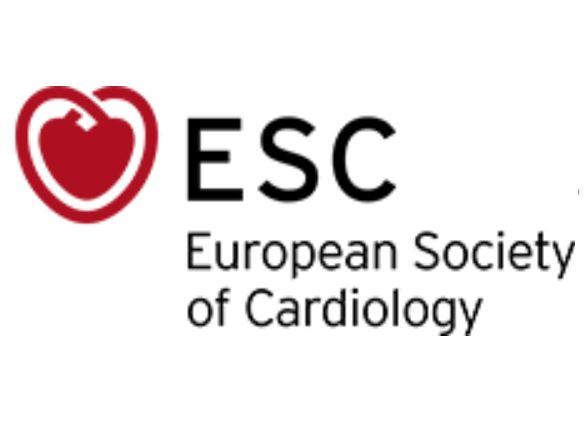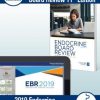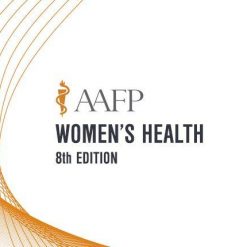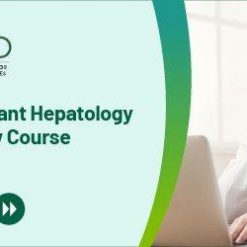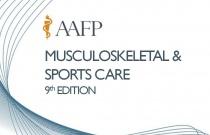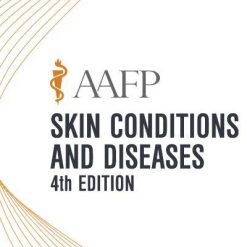ESC Congress 2020 – The Digital Experience
$60
ESC Congress 2020 – The Digital Experience
YOU WILL GET THE COURSE VIA LIFETIME DOWNLOAD LINK (FAST SPEED) AFTER PAYMENT
ESC Congress – the world’s largest cardiovascular event – moves 100% online for the first time in its 70-year history, to create ESC Congress 2020 – Challenging Times, Infinite Possibilities.
The decision by the EuropeanP Society of Cardiology (ESC) follows an announcement from the Dutch government banning public gatherings until 1 September to prevent the spread of coronavirus.
This cutting-edge, online event will be extraordinary. The ESC is creating a digital experience to disseminate the most exciting cardiovascular science in the most engaging formats possible – and featuring key opinion leaders from around the world.
A taste of what’s to come:
- Dedicated COVID-19 track showcasing first-hand experience of top experts across the globe.
- Late-Breaking Trial Sessions revealing the most anticipated clinical results.
- Novel research presented in abstracts covering all areas of cardiovascular science.
- Key opinion leaders explaining how new research impacts practice.
- New ESC Clinical Practice Guidelines introduced and discussed by those who wrote them.
Topics And Speakers:
1-A 40 year old man with recurrent syncope and 13 seconds asystole on Tilt table test
2-A 40 year old man with recurrent syncope and 13 seconds asystole on Tilt table test
3-A 40 year old man with recurrent syncope and 13 seconds asystole on Tilt table test
4-A historical perspective why we opted triple therapy for so long and what made us change our mind_
5-A patient with angina and without obstructive coronary artery disease How to implement the Guideli
6-A patient with angina and without obstructive coronary artery disease What do the Guidelines say
7-A patient with severe aortic stenosis and poor left ventricular function Case presentation
8-A patient with severe aortic stenosis and poor left ventricular function How I did treat
9-A patient with severe aortic stenosis and poor left ventricular function How would I treat
10-A patient with severe aortic stenosis and poor left ventricular function – Case presentation. –
11-A patient with severe aortic stenosis and poor left ventricular function – How I did treat. –
12-A patient with severe aortic stenosis and poor left ventricular function – How I did treat.
13-A patient with severe aortic stenosis and poor left ventricular function – How I did treat.
14-An unusual cause of chest pain and syncope
15-Angina relief in chronic coronary syndrome is this all you get from revascularization
16-ANGPTL3 antisense oligonucleotide to lower triglycerides
17-Antithrombotic treatment after valve replacement
18-Antithrombotic treatment after valve replacement.
19-Aortic valve stenosis Diagnostic challenges and timing of intervention
20-Aortic valve stenosis – Diagnostic challenges and timing of intervention.
21-Apolipoprotein C III Reduction in Cardiovascular Disease
22-Atrial arrhythmias cellular mechanisms targets and new therapeutic approaches
23-Avoiding traps in 3D echocardiography
24-Avoiding traps in Doppler studies
25-Avoiding traps in speckle tracking echocardiography
26-Avoiding traps in stress echocardiography
27-Case A patient with angina and without obstructive coronary artery disease
28-Case Patient with a severe proximal LAD disease and mild symptoms
29-Case Post myocardial infarction when to start lipid lowering therapy and how low to go
30-Case Severe aortic regurgitation bicuspid valve and dilated aorta
31-Case – Severe aortic regurgitation, bicuspid valve, and dilated aorta.
32-Case 1 A patient with congestive heart failure and reduced ejection fraction
33-Case 1 A patient with renal insufficiency What is the optimal anticoagulation
34-Case 1 Bicuspid aortic valve stenosis
35-Case 1 Cardiogenic shock in acute coronary syndrome
36-Case 1 Investigating an athlete with T wave inversion when to stop
37-Case 1 The role of invasive functional evaluation to guide revascularization in multi vessel coron
38-Case 2 A patient with congestive heart failure and preserved ejection fraction
39-Case 2 Aortic stenosis and coronary artery disease
40-Case 2 Athlete with prolonged QT interval when to worry
41-Case 2 Cardiogenic shock in myocarditis
42-Case 2 Multi vessel coronary artery disease with bifurcation lesions
Case 2 Subclinical atrial fibrillation is detected in a patient When to anticoagulate
43-Case 2 When surgery is not an option for left ventricular obstruction in hypertrophic cardiomyopat
44-Case 2 – Aortic stenosis and coronary artery disease.
45-Case 2 – Athlete with prolonged QT interval_ when to worry
46-Case 2 – Cardiogenic shock in myocarditis.
47-Case 2 – Multi-vessel coronary artery disease with bifurcation lesions.
48-Case 2 – Subclinical atrial fibrillation is detected in a patient – When to anticoagulate
49-Case 2 – When surgery is not an option for left ventricular obstruction in hypertrophic cardiomyopathy. –
50-Catecholamine toxicity and Takotsubo cardiomyopathy
51-Catecholamine toxicity and Takotsubo cardiomyopathy. –
52-Channel by Topic – Heart Failure [Saturday Replay] –
53-Chronic total coronary occlusion Case presentation
54-Chronic total coronary occlusion Discussion
55-Chronic total coronary occlusion How I did treat
56-Chronic total coronary occlusion How would I treat
57-Complete revascularization in acute coronary syndromes is it for everyone
58-Complex coronary disease CABG or PCI
59-Coronary computed tomography versus stress echocardiography guided management of stable chest pain p
60-Current management of advanced heart failure.
61-Detection of new-onset atrial fibrillation in heart failure patients using daily non-invasive ECG monitoring in the TIM-HF2 telemedicine trial
62-Diagnostic algorithms for HFpEF
63-Diagnostic algorithms for HFpEF.
64-Diagnostic impact of early cardiac magnetic resonance imaging in patients with the working diagnosis of MINOCA. Does the final diagnosis affect patients outcome
65-Diagnostic work up of NSTE ACS
66-Drug treatment for chronic heart failure
67-Dual versus triple antithrombotic therapy, does trial design make the difference
68-Final Results of the EVAPORATE Trial
69-Forget stress tests FFR should be the gold standard to work up coronary artery disease CON
70-Forget stress tests FFR should be the gold standard to work up coronary artery disease PRO
71-Future of HFpEF whats coming
72-Heart failure Diagnosis and classification
73-Heart failure patients’ adherence to hybrid comprehensive telerehabilitation and its impact on progn
74-Heart failure with mid range ejection fraction the grey zone
75-Heritability of aortic valve stenosis
76-How do I treat a patient who has recovered his left ventricular ejection fraction_
77-How to assess the risk of sudden cardiac death_
78-How to manage my challenging long QT syndrome patients.
79-How to prevent sudden cardiac death_
80-How to use antithrombotic therapy in acute coronary syndromes.
81-How to use antithrombotic therapy in chronic coronary syndromes.
82-identifying high risk thrombotic risk in atrial fibrillation undergoing percutaneous coronary intervention is there a benefit of triple therapy
83-Imaging in chronic coronary syndrome
84-Imaging phenotypes of HFpEF
85-Imaging the heart hopes and fears
86-Improved safety and efficacy of atrial fibrillation ablation.
87-Invasive treatment in NSTE-ACS.
88-Ischemic burden reduction after chronic total occlusion percutaneous coronary intervention related to patient prognosis
89-Key messages and closing remarks
90-Latest insights into clinical features of Takotsubo syndrome.
91-Lifestyle modification in chronic coronary syndrome.
92-Lipoprotein A is a strong risk factor for aortic valve calcium
93-Machine learning ECG interpretation
94-Making the correct diagnosis Differentiating PAH from PH due to LHD
95-Management of comorbidities in heart failure.
96-Management of LV obstruction in HOCM
97-Mechanical circulatory support in advanced heart failure_ evolving concepts.
98-Mechanical circulatory support in critical cardiac care.
99-Mitral regurgitation – Different mechanisms, different treatments.
100-Multimodality imaging in aortic valve disease. – ESC Congress 2020
101-Multimodality imaging in patients with left ventricular hypertrophy.
102-Multimodality imaging in suspected chronic coronary syndromes.
103-My patient has non ischemic ventricular tachycardia Case presentation
104-My patient has non ischemic ventricular tachycardia Discussion
105-My patient has non ischemic ventricular tachycardia How I did treat
106-My patient has non ischemic ventricular tachycardia How would I treat
107-My patient has post myocardial infarction ventricular tachycardia Case presentation
108-My patient has post myocardial infarction ventricular tachycardia Discussion
109-My patient has post myocardial infarction ventricular tachycardia How would I treat
110-Nationwide trends for myocardial infarction and mortality among type 2 diabetes patients
111-Obstructive sleep apnoe and cardiovascular, heart failure and mortality outcomes with empagliflozin
112-Optimal medical management is enough in patients with symptoms and ischemia
113-Optimal medical management is enough in patients with symptoms and ischemia
114-Outcomes of 7560 chronic total occlusion patients undergoing percutaneous coronary intervention results from a Dutch nationwide registry
115-Out-of-hospital cardiac arrest and no ST-elevation_ who benefits from an early invasive approach ?
116-Palliative and end-of-life care_ the cornerstone of advanced heart failure management.
117-Panel discussion with audience Q&A
118-Patient referral and prognosis in advanced heart failure.
119-Patient selection and burden of comorbidities in heart transplantation.
120-Patient with a severe proximal LAD disease and mild symptoms What do the Guidelines say
121-Pharmacological treatment NSTE
122-Post myocardial infarction when to start lipid lowering therapy and how low to go
123-Post myocardial infarction when to start lipid lowering therapy and how low to go
124-Recurrent seizures despite temporal lobectomy A case of cardiogenic syncope.
125-Remote heart failure management using a multiparameter implantable cardioverter-defibrillator alert the multicentric RE-HEART registry
126-Revascularization in chronic coronary syndrome. – ESC Congress 2020 – The Digital Experience
127-Revascularization in chronic coronary syndromes in the aftermath of the ISCHEMIA trial. –
128-Risk assessment in NSTE-ACS.
129-Severe aortic regurgitation, bicuspid valve, and dilated aorta – How to implement the Guidelines and take home message.
130-Severe aortic regurgitation, bicuspid valve, and dilated aorta – What do the Guidelines say.
131-Single high sensitivity troponin to triage patients with chest pain
132-Sleep disordered breathing prevalence and association with cardiovascular disease in the French general population
133-State-of-the-art lecture – A personalized approach to the management of left ventricular obstruction in hypertrophic cardiomyopathy.
134-The importance of imaging in assessing RV function in PAH
135-The patient with bradycardia – New and conventional ways to pace the heart.
136-Transcatheter mitral valve repair should be added to medical therapy in secondary mitral regurgitation – CON.
137-Transcatheter mitral valve repair should be added to medical therapy in secondary mitral regurgitation – Discussion.
138-Transcatheter mitral valve repair should be added to medical therapy in secondary mitral regurgitation – PRO.
139-Translating cellular mechanisms into new diagnostic and therapeutic approaches. –
140-Treatment for Patients with Stable Ischemic Heart Disease and Heart Failure
141-Trends in cardiovascular risk from 2004 to 2016 –
142-Tricuspid valve regurgitation a marker or a disease
143-Triple therapy still an option
144-Triple therapy is still needed in patients with atrial fibrillation undergoing PCI CON
145-Triple therapy is still needed in patients with atrial fibrillation undergoing PCI Discussion
146-Triple therapy is still needed in patients with atrial fibrillation undergoing PCI
147-Welcome and objectives – ESC Congress 2020 – The Digital Experience
148-What does one need to know about sports and driving in ICD patients
149-When should I consider a patient for a primary preventive ICD
150-When to choose cardiovascular magnetic resonance for chronic coronary syndromes and how to interpret
151-When to choose computed tomography for chronic coronary syndromes and how to interpret it
152-When to choose nuclear imaging for chronic coronary syndromes and how to interpret it
153-When to choose stress echocardiography for chronic coronary syndromes and how to interpret it
154-Which heart failure patients should receive CRT and how should they be followed
155-Worsening heart failure in the elderly Case presentation
156-Worsening heart failure in the elderly Discussion
157-Worsening heart failure in the elderly How I did treat
158-Worsening heart failure in the elderly How would I treat
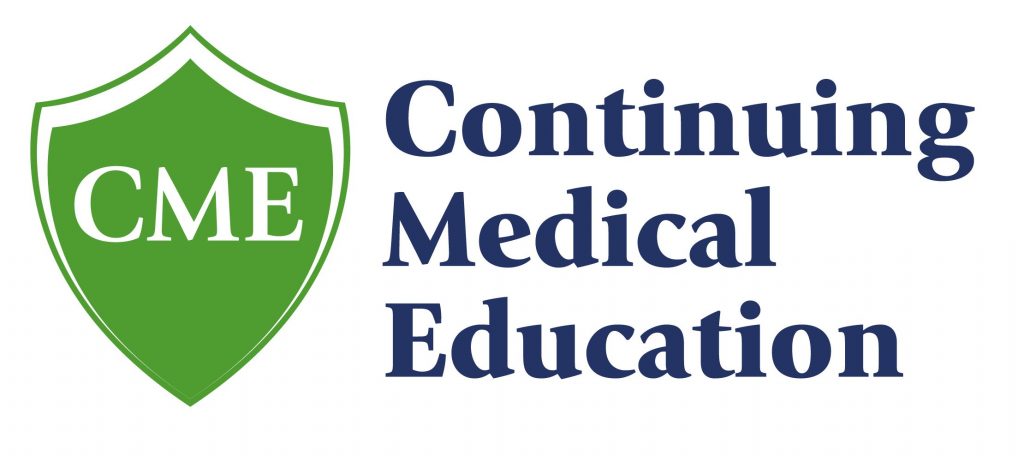
 CanadaQbank USMLE Step 1 2022 Qbank (PDF)
CanadaQbank USMLE Step 1 2022 Qbank (PDF) 